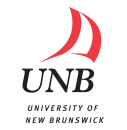Standard Courses Abbreviations
| Aboriginal Education | ABRG |
| Academic ESL | AESL |
| Anthropology | ANTH |
| Applied Science | APSC |
| Arabic | ARAB |
| Archaeology | ARCH |
| Arts | ARTS |
| Astronomy | ASTR |
| Biology | BIOL |
| Bridging Year for Aboriginal Students | BY |
| Business Administration | ADM |
| Chemical Engineering | CHE |
| Chemistry | CHEM |
| Chinese | CHNS |
| Civil Engineering | CE |
| Classics and Ancient History | CLAS |
| Comparative Cultural Studies | CCS |
| Computer Engineering | CMPE |
| Computer Science | CS |
| Drama | DRAM |
| Economics | ECON |
| Education | ED |
| Electrical Engineering | EE |
| Engineering | ENGG |
| English | ENGL |
| Environment and Natural Resources | ENR |
| Environmental Studies | ENVS |
| Earth Sciences | ESCI |
| Fine Arts | FNAT |
| Forestry | FOR |
| Forest Engineering | FE |
| French | FR |
| French/Linguistics | FR/LING |
| Family Violence Issues | FVI |
| Gender and Women's Studies | GWS |
| Geodesy & Geomatics Engineering | GGE |
| Geography | GEOG |
| Geological Engineering | GE |
| German | GER |
| German Studies | GS |
| Greek | GRK |
| History | HIST |
| International Development Studies | IDS |
| Japanese | JPNS |
| Kinesiology | KIN |
| Latin | LAT |
| Law | LAW |
| Law in Society | LWSO |
| Linguistics | LING |
| Mathematics | MATH |
| Mechanical Engineering | ME |
| Media Arts & Culture | MAAC |
| Medical Laboratory Science | MLS |
| Multimedia Studies | MM |
| Nursing | NURS |
| Philosophy | PHIL |
| Physics | PHYS |
| Political Science | POLS |
| Psychology | PSYC |
| Publishing | PUB |
| Recreation & Sports Studies | RSS |
| Russian & Eurasian Studies | RUSS |
| Sociology | SOCI |
| Software Engineering | SWE |
| Spanish | SPAN |
| Statistics | STAT |
| Technology Management & Entrepreneurship | TME |
Course Numbers
Although the University is on a course credit system and has tended to move away from the idea of a rigid specification with respect to which year courses should be taken, yet there is some need to provide information as to the level of the course.
The various disciplines and the courses which they offer are presented in alphabetical order.
The course numbers are designated by four digits.
- First Digit designates the level of the course:
1 Introductory level course
2 Intermediate level course which normally has prerequisites.
3, 4 and 5 Advanced level course which requires a substantial background.
6 Postgraduate level course
- Second and Third Digits designate the particular course in the Department, Division or Faculty.
- Fourth Digit designates the duration of the course: 0 Year (or full) course normally offered over two terms. 1-9 Other than full year courses.
- Departments may assign specific meanings to these digits; consult the departmental listings.
- Students should consult the official Web Timetable (www.unb.ca/schedules/timetable/) to find when courses are offered in a particular year and when they are scheduled. Not all courses listed are given every year.
Codes
The following codes are used in course descriptions:
| A - alternate years | R - reading course |
| ch or cr - credit hours | S - seminar |
| C - class lecture | T - tutorial |
| L - laboratory | [W] - English writing component |
| LE - limited enrolment | WS - workshop |
| O - occasionally given | * - bi-weekly courses |
| P - programming |
For example, 6 ch (3C 1T, 2C 2T) designates a course with 6 credit hours: 3 class lecture hours and 1 tutorial hour per week in the first term; 2 class lecture hours and 2 tutorial hours per week in the second term.
Combinations of class lectures, laboratories, seminars, etc., are indicated by a slash line, e.g., 5C/L/S.
Before registration, check all course offerings in the official Timetable. Not all courses listed are given every year.


